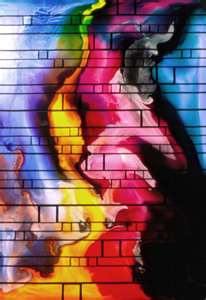Thanjavur paintings basically signify paintings created using a style and technique, which originated in Thanjavur during the Maratha period in the 16th century. A typical Thanjavur painting would consist of one main figure, a deity, with a well-rounded body & almond shaped eyes. This figure would be housed in an enclosure created by means of an arch, curtains etc. The painting would be made by the gilded and gem-set technique - a technique where gold leaves & sparkling stones are used to highlight certain aspects of the painting like ornaments, dresses etc.
The painting would be bright and colourful and breathtakingly beautiful. The impact in a darken room is that of a glowing presence. While most of the paintings would depict the Child Krishna and his various pranks, paintings of other deities were also created. Over a period of time changes have occurred in the stylization - for example, the figures are no longer round. Presiding deities of various famous temples are also being depicted in the paintings. The technique is now more in use than the style.
Tanjore Painting is a peculiar, ancient, miniature type of painting named after the place Thanjavur (called Tanjore in English) in Tamil Nadu, a Southern state of INDIA. Thanjavur district is famous for various arts and crafts in which paintings are ranked high among the other arts like Thanjavur Toys, Thanjavur Plates, etc. Its origin dates back to the Nayak & the Maratha period in the 16th century.
The Maratha rule of Thanjavur lasted for about 2 centuries from the late 16th century. The Thanjavur school of painting evolved in a period full of political chaos in South India. Thanjavur Paintings flourished under the patronage of the Nayak & Maratha princes in the 16th to the 18th centuries. The art was practiced by two main communities namely - the Rajus in Tanjore and Trichy(a city near Tanjore) and Naidus in Madurai(a city ruled by Pandiyas) The artists (Rajus & Naidus) who are originally Telugu speaking people from "Rayalseema" region, moved to Tamil Nadu in the wake of the Nayaks rule of Madurai & Tanjore. The paintings were rooted in tradition and innovation was limited. The art was sacred to those master craftsmen who choose to be anonymous and humble.
Paintings were done on materials like wood, glass, mica, exotic media such as ivory, murals and manuscripts. Most of the paintings were of Hindu deities & saints. Other courtly and secular portraits were also created.
The early paintings were embedded with real Diamonds, Rubies and other precious stones. Later, use of semi-precious and artificial stones gained popularity. There are some examples of this art in the "Saraswathi Mahal Library", in Tanjore, set up & developed by King - Serfoji II This monarch, who reigned from 1798 to 1832, to whom we owe the "Ganesha shrine" in the "Tanjore Big Temple", played an important part in the history of the art of his times.




















































